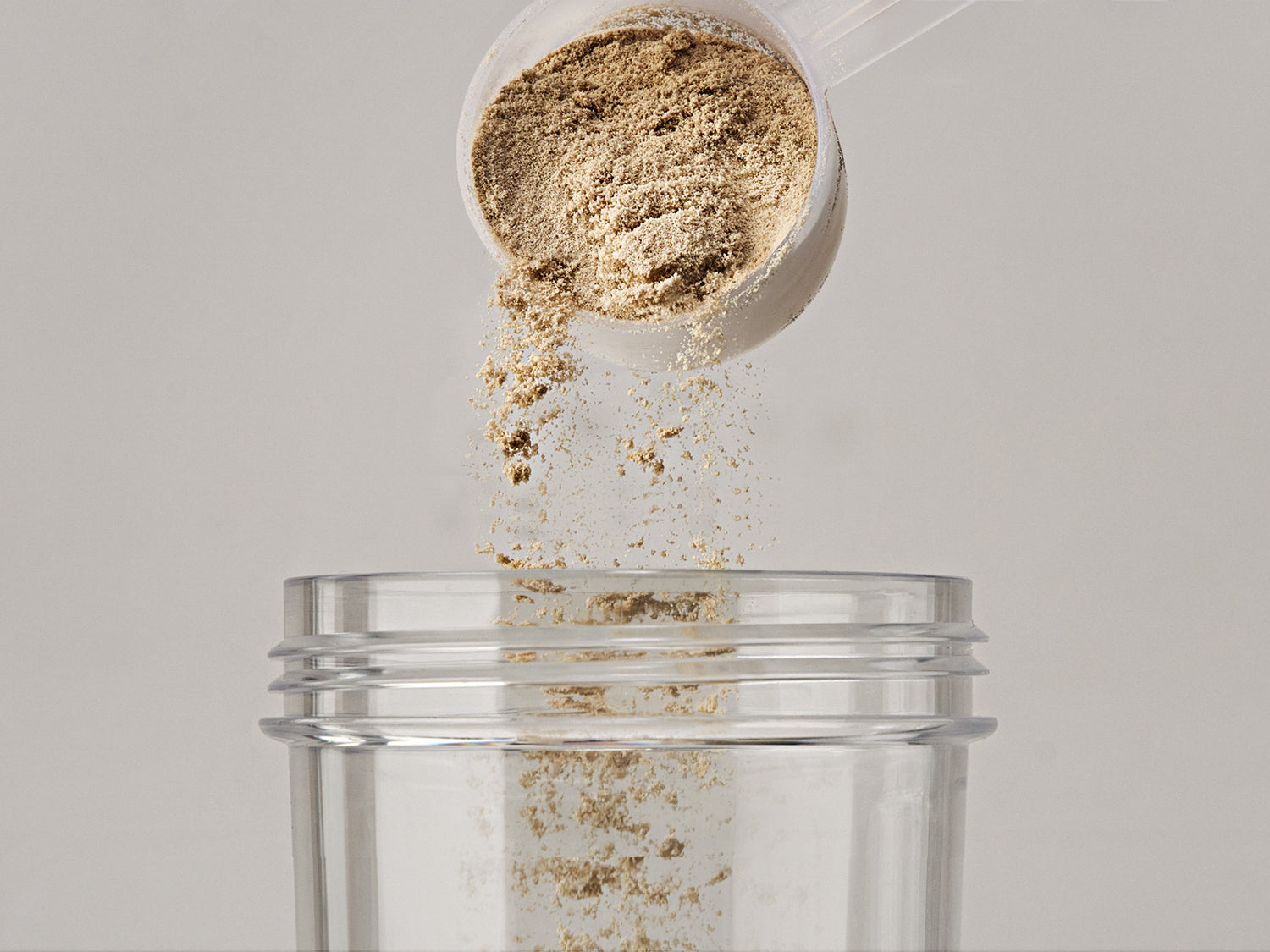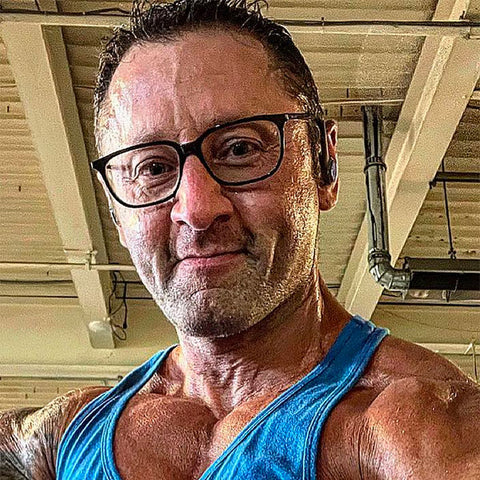I realized a few months ago that I got my first weight set and bench for Christmas in 1982 when I was 13, which means I have now been lifting weights for over 40 years.
That’s a very long time, and without patting myself on the back too much, only a small percentage of people who begin training in their teens will still be doing it after age 40, and fewer still will be pumping iron at 50 and beyond.
What’s my secret to longevity in the iron game? How have I stayed motivated over these long decades?
Pure passion for training and the undying desire to be the best I can be physically have driven me to persist.
But that’s not all.
I’ve met droves of men who were eager to inform me ‘they used to look like me’ but stopped training due to injuries, life circumstances, or simply disinterest. Many have also shared that they quit after being frustrated with not being able to do what they used to do in the gym.
I’ve dealt with more than my share of injuries, live with chronic pain every waking moment, and certainly am no longer capable of many of the feats of strength I routinely performed daily.
Yet here I am, pushing 54, and still in the gym almost every morning for two hours, and maintaining a lean, 220-pound physique that isn’t terribly different from my prime.
Premium Protein Supplements on SALE
I’m not a genetic marvel and I’m not a genius, but I have learned to adapt my training methods to respect the fact that my body is aging and special considerations must be made for those of us who have enjoyed our youth and are now into middle age or beyond.
You've got to train harder and smarter than when you were younger if you want to stay in the game.
Here’s the training routine and tips that’ll get you the gains as you pass the big 4-0.
1. Warm up thoroughly
As an impatient young ruffian, I abhorred warming up and would skip through the critical process as quickly as possible, not even truly warming up.
On leg day, I would put 135 on the bar for squats for 10 reps, 225 for 5-6, then slap a third 45 on to get started with 315.
Chest and shoulder presses followed a similar inadequate pattern, and I am paying dearly for my impetuousness all these years later in the form of constant pain and arthritis in my lower back, shoulders, and knees.
Warming up is important no matter your age, but it takes on a far more significant level of importance after age 40. By gradually easing into bigger weights via several progressively heavier sets with higher reps, you bring blood and warmth into the muscles and especially the tendons and ligaments; preparing them for the more demanding loads to come.
Think of all of those as you might a rubber band. Put a rubber band out in the cold for a while, try to pull it apart, and it will snap. Leave it in the sun instead, and it elongates with ease.
Cold muscles and connective tissues are far more susceptible to ruptures and tears. I should also point out that as we age, injuries heal at a much slower rate.
Getting hurt at 40 or 50 can impair or even stop your training for days, weeks, months, or in extreme cases, for good!
Never, ever skip warm-ups or rush through them, even if it means your actual workout needs to be cut short a bit. This is one of those cases where an ounce of prevention truly is worth a pound of cure.
Creatine for SALE [Free Shipping]
2. Appropriate exercise selection
Many of us stubbornly insist on doing the same exercises we always did, long after they are no longer safe for us to perform.
We have had it drilled into our brains for decades that you ‘have to’ include all the barbell basics in our workouts: bench press, squat, deadlift, military press, and barbell row.
If you’ve incurred injuries, chances are high that some or all of these tip far more toward the risk side in the risk/reward ratio.
Your body often does its best to warm you with pain, trying to let you know this isn’t a good idea, but we often persist until a devastating injury or re-injury occurs.
There are many ways to stimulate our muscle groups, and so many exercises to choose from that there is no excuse to continue doing exercises that are now dangerous for you.
Listen to your body and ditch that ‘hardcore’ attitude. You may feel like you’re 20 mentally, but a 40-year-old body should be treated as such and respected. You can still train hard and keep your muscle mass without taking any stupid chances.
3. Strength: the past is the past
Yes, you used to bench press X amount and could squat this much. Like the song in Disney’s Frozen goes, “Let it go!” I train at a big hardcore gym with a fair amount of very strong young men.
Every day I watch them do what I used to be able to do, and often things I never did. Every so often I catch myself feeling sad or envious, but then I remind myself that I had my time and pushed and pulled a lot of impressive weights for many years.
Also Read: How to Increase Your Squat?
Those older guys who stubbornly insist on trying to continue using the same weights they did in their youth are begging for an injury. If you identify as a bodybuilder, the amount of weight you use is irrelevant anyway.
Your main priority is cosmetic, meaning the way your body looks is what matters and not how strong it is. I am aware that many of you took and continue to take pride in ‘being as strong as you look,’ and that’s commendable.
It’s just not a mindset that aligns well with longevity in training as our bodies age the way all mortal men do.
Vitamins & Other Supplements at Discounted Prices
4. Make moderate weights feel heavier
Rather than merely telling you to get over the fact that it’s no longer safe or wise to lift as heavy as you did 10 or 20 years ago, I offer an effective alternative, which is to make somewhat lighter weights feel heavier.
This is accomplished by slowing the reps down and focusing on squeezing the muscle as hard as possible during the eccentric stroke of the rep. A 185-pound bench press can feel like 315 if you forcefully contract the pecs on every rep.
Do your best to put the muscle under as much tension as possible during a set. Use a full range of motion and try to make every exercise harder, not easier.
Also Read: Top Supplements for Men
5. Use better form
You may be able to get away with slinging weights around as a youngster, but you’re asking for trouble now if you use ballistic form. Always be in control of the weight and keep your form tight. It should take you twice as long to lower the weight as it did to lift.
Absolutely never, ever bounce or rebound out of the bottom position of the rep. Doing so amplifies the stress on your connective tissues dramatically and puts you at a very high risk of tearing a muscle.
6. Machines are perfectly fine!
A lot of older dudes have a real problem with using more than a couple machines because they are stuck in that hardcore mentality that ‘real men’ lift only raw iron barbells and dumbbells just like Ronnie Coleman and Branch Warren did.
To counter that, I’d say 6X Mr. Olympia Dorian Yates was a ‘real man’ despite using various machines and cable movements in his Blood and Guts workouts back in the 90’s.
The fact is that those of you who have been training heavily for many years have accumulated significant wear and tear to your joints, tendons, ligaments, and cartilage. You probably lack the stability to balance heavy barbells and more so dumbbells at this point in your long training career. Machines are an excellent way to continue training your muscles under heavy loads with minimal risk of injury.
The resistance is balanced for you already and the movement takes place through a fixed track or plane of motion. Dexter Jackson won more Pro shows than any other bodybuilder and also had the longest Pro career, from 1999 to when he retired at the 2020 Mr. Olympia, a few weeks shy of turning 52!
I interviewed Dexter many times, and he attributed his longevity in large part to shifting away from free weights and towards more machines in his training after he turned 40. Take notes from The Blade on this and stop looking down your nose at machines if you want to keep training hard and looking great as an older bodybuilder.
Also Read: Top 10 Destination Fitness Retreats
7. Work your core
Over 30 percent of men over the age of 40 suffer from chronic lower back pain, and the root of the problem often lies in a weak core. Without that ‘inner weight belt,’ the lower back simply doesn’t have the support it needs for everything from mundane tasks to maintaining an upright posture.
On that note, poor posture also contributes to lower back pain. A strong core will benefit you in many ways and will help you avoid numerous injuries. Take the time to work your core with planks, crunches, and leg raises.
As a bonus, you will have better-developed abs, but the real goal here is to avoid injury and chronic pain. Your core keeps you stabilized at all times, so don’t neglect it!
Supplement Bundles You Can't Miss
8. Stretch
You’ve heard the term ‘use it or lose it’ thousands of times, and it certainly applies to your mobility and range of motion. If you fail to move your muscles through their full range of motion and don’t stretch, your movement will become limited over time.
The best time to stretch is when your body’s core temperature is elevated and there is plenty of blood around your joints. Thus, stretching immediately after weight training or cardio is ideal.
You can find good stretching routines online or come up with your own. Just be sure to stretch your shoulders, lower back, hips, quads, and hams at least every other day if not every day. This will ensure that you maintain your mobility for many years.
When you see someone who ‘moves like an old man’ or woman, you are witnessing a person who has lost much of the joint mobility they had in their younger years. Don’t let that happen to you!
And if you want to have excellent mobility and flexibility, take a yoga class 2-3 times a week.
Also Read: How Can You Work Out Every Day?
9. Rest when you need to
As much as I urge you all to train hard and consistently, you should also listen to your body and give it a break when it needs one, particularly from weights. It usually only takes a day or two, but this is an individual matter.
If your joints and tendons are feeling beat-up and inflamed, never hesitate to skip a day or two, possibly more.
As a rule of thumb, I don’t like to see anyone over the age of 40 training with weights more than three days in a row, even if they are working different muscle groups.
There is so much overlap among them, and we also need to keep in mind that the CNS or Central Nervous System is being stressed every time you train with anything more than moderate intensity, which you should be doing to experience optimal results from your workouts.
10. Cardio is key!
Last but not least, you must do regular cardiovascular training. You may not be able to flex it in the mirror, but your heart is the most important muscle in your body. Heart disease is still the number one cause of death among all people, and keeping your heart strong and healthy goes a long way toward preventing that fate.
Of course, we all want to look fantastic on the outside, but none of that matters if your life is cut short. Research has found that increased cardio fitness levels were directly associated with longer lives, and people with the highest aerobic fitness levels lived the longest, especially those over the age of 70.
That being said, you should work hard on your cardio and build up your VO2 Max, or the maximum rate of oxygen your body is able to use during exercise. Very low-intensity cardio such as walking at a normal pace won’t do much to improve your VO2 Max.
Push yourself and eventually work up to either a faster rate or HIIT style cardio, in which you alternate periods of all-out sprints with recovery periods. Besides all the benefits to your health and longevity, cardiovascular training also burns calories so you can show more muscle definition.
Sample ‘Mature’ workout
Note: You will see that options are given. Those of you who have no limitations due to a past history of injury or chronic issues such as arthritis should do the first suggested exercise, whereas the exercise or exercises that follow would be more suited to those with limitations.
Warm-ups are not shown, but every exercise should begin with 2-3 sets that gradually increase the weight and prepare you for the ‘working sets.’ An example on squats might be 45 pounds (just the bar) for 20, 95 for 15, and 135 for 12 to begin your first working set of 185 pounds.
Also note that as the work sets progress, you will generally be increasing the weight and performing fewer reps.
DAY 1 Chest, shoulders, triceps
|
Flat dumbbell press OR machine bench press Pec flye Incline barbell press OR Smith machine incline press OR machine incline press Dumbbell lateral raise OR machine lateral raise Seated overhead dumbbell press OR machine overhead press3 x 60 seconds EZ-bar skull crusher OR cable pushdown Parallel bar dips OR seated dip machine Plank |
4 x 15, 12, 12, 10 4 x 12 4 x 12, 12, 10, 10
4 x 15, 12, 12, 10 4 x 15, 12, 12, 10 4 x 15, 15, 12, 10
4 x 15, 12, 12, 10 3 x 60 seconds
|
30 minutes cardio
Stretch
DAY 2 Back and biceps
|
Chin-ups OR lat pulldowns Barbell row OR machine row with chest support 1-arm dumbbell row OR seated cable row Hyperextensions OR lower back machine Barbell curl OR machine curl Hammer dumbbell curl OR hammer cable curl with rope attachment Hanging leg raises OR ‘Captain’s Chair’ knee raises |
4 x 15, 15, 12, 12 4 x 15, 12, 12, 10 4 x 15, 12, 12, 10 4 x 15, 15, 12, 12 4 x 15, 12, 12, 10 4 x 15, 12, 12, 10
3 x 15-20 |
30 minutes cardio
Stretch
DAY 3 Legs
|
Lying leg curl Seated leg curl OR standing 1-leg curl Leg adductor Squat OR Smith machine squat OR leg press Leg extension Standing calf raise Seated calf raise Crunches 30 minutes cardio Stretch |
4 x 20, 15, 12, 10 4 x 20, 15, 12, 10 4 x 20, 15, 15, 12 4 x 20, 15, 12, 12 3 x 15-20 3 x 20, 15, 12 3 x 15-20 3 x 15-20
|
OFF DAY: 30 minutes cardio, 4 sets for abs, stretch
Hey did you get a chance to read our article on calf exercises?
Ready to get Started?
Buy Best Bodybuilding Supplements for Quicker Results
Read More Blogs:
- How to Get a Thicker Back? - 3 Workouts for the Trick
- 10 Exercises for the Perfect Bicep Blaster Workout
- CrossFit Workouts – The Fitness Trend That'll Surprise You
- A Complete Guide to a Leg Workout with Dumbbells
- The Best Chest Exercises For Men





